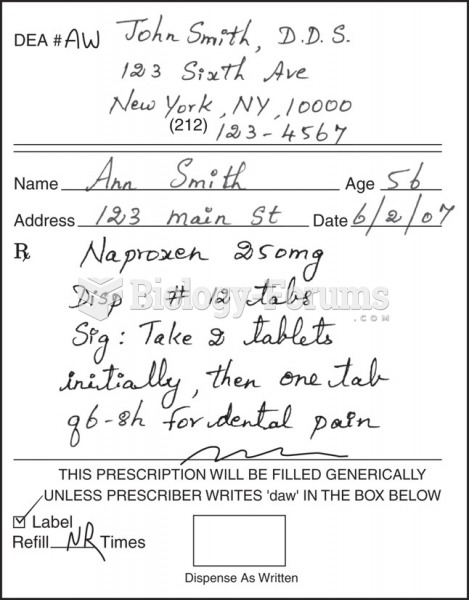This topic contains a solution. Click here to go to the answer
|
|
|
Did you know?
Inotropic therapy does not have a role in the treatment of most heart failure patients. These drugs can make patients feel and function better but usually do not lengthen the predicted length of their lives.
Did you know?
Adolescents often feel clumsy during puberty because during this time of development, their hands and feet grow faster than their arms and legs do. The body is therefore out of proportion. One out of five adolescents actually experiences growing pains during this period.
Did you know?
There are more nerve cells in one human brain than there are stars in the Milky Way.
Did you know?
The longest a person has survived after a heart transplant is 24 years.
Did you know?
Approximately 500,000 babies are born each year in the United States to teenage mothers.







